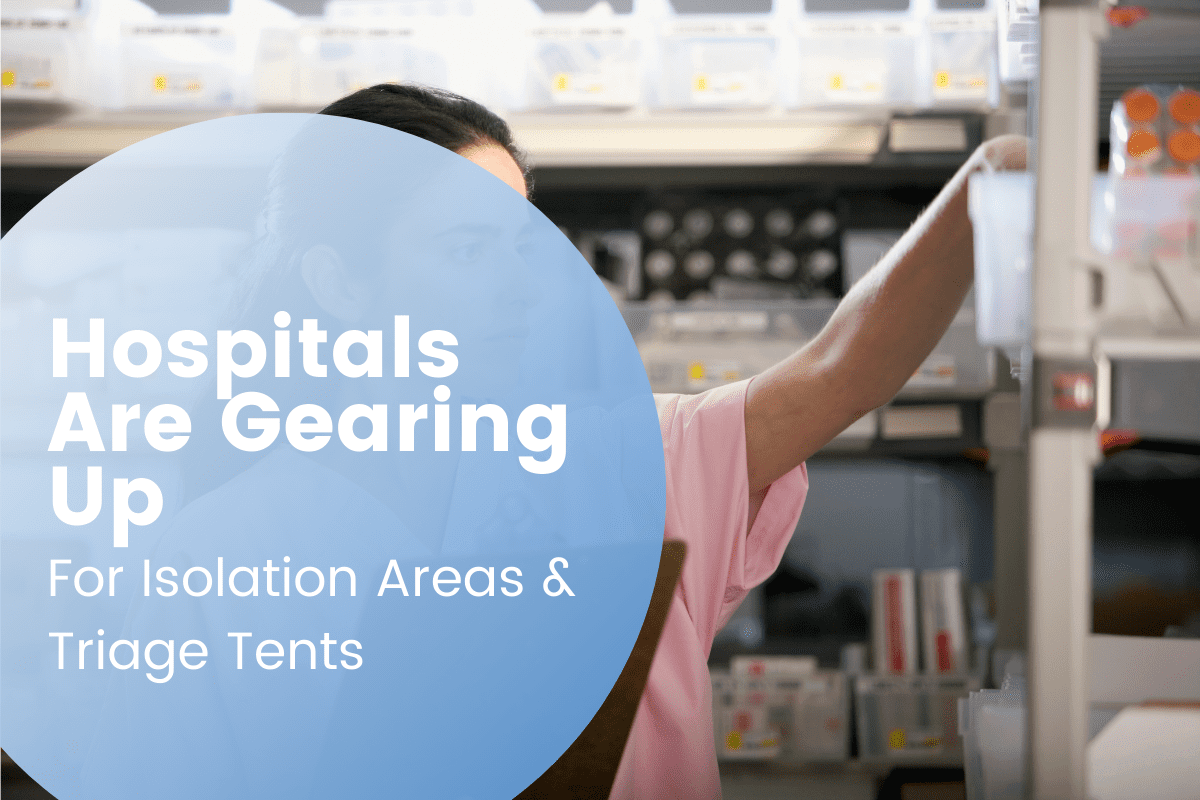
Hospitals are diligently working to limit the spread of COVID-19 in their facilities. Isolating symptomatic patients as soon as possible is a key factor for infection control in healthcare settings. With the goal of minimizing exposure to patients and healthcare personnel, hospitals are working fast to set up isolation areas and triage tents.
Hospitals are sectioning off isolation areas, where a limited number of healthcare personnel are allowed access. Triage tents are set up outside of hospitals, where visitors are screened coming into the hospital in order to limit the number of individuals entering the facility and the spread of infection within the facility. Equipment and supplies utilized in these units are restricted to these areas as another method to limit infection spread. This is pushing hospitals to allocate resources to isolation areas and triage tents to handle a surge of COVID-19 cases.
Triage Tents
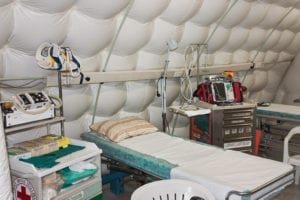
The World Health Organization lists guidance for strengthening clinical management of COVID-19 patients. Triage is the first step in recognizing and sorting patients based on their symptoms. Since much of COVID-19 testing is manual, triage tents are beneficial for creating an alternative space for testing away from other patient areas. Many of these tents are being set up outdoors and are similar to tents you might see at a large event. Inside the tent, hospitals are preparing to supply the equipment necessary for efficient screening. A look inside these tents shows some of the items hospitals are accounting for in their triage tents.
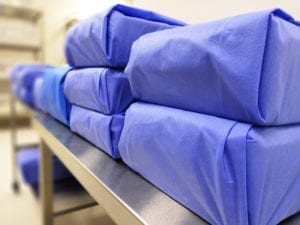
- Personal protective equipment (PPE) is a priority for triage tents. This include gloves, masks, gowns and other equipment that serves as an infection barrier for healthcare personnel and infected patients.
- PPE must be stored in an accessible and sanitary environment that is easily transportable by healthcare personnel. Stainless steel Lakeside Case Carts are manufactured in various sizes and weight capacities allow hospitals to select the best fit for their triage space.
- Healthcare personnel are also taking more extensive protection measures by wearing impermeable gowns and Power Air Purifying Respirators or N95 Respirators and eye protection. These are only some of the various examples that are being used in triage tents to protect against airborne illnesses.
- Mobile handwashing stations are units supplied with soap and water to maintain high sanitary standards for healthcare professionals in triage tents. Units like the Lakeside Compact Portable Handwashing Station help conserve space and are easily transportable.
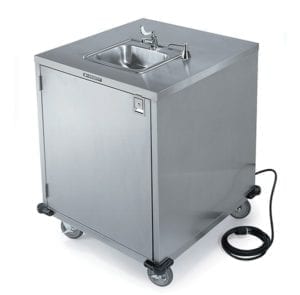
- Tables and chairs must be set up for healthcare workers to better triage patients coming into the hospital. The setup design also serves as physical barrier to prevent patients from easily walking into the hospital before being properly triaged.
- Emergency carts are designed to easily access life-saving equipment and medication in the event that a patient needs emergency treatment. They are typically located throughout most hospital departments as a precautionary measure. The lightweight Persolife Emergency Cart allows easy accessibility to vital healthcare supplies.
Isolation Rooms
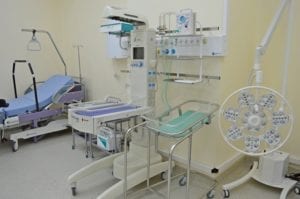 Airborne Infection Isolation Rooms (AIIRs) are a standard for hospitals but many facilities are anticipating that existing capacity will not be sufficient during this time. AIIRs use negative air pressure to prevent airborne illnesses from escaping the room and infecting others. These areas have been used for illnesses such as tuberculosis or measles in the past. With a looming surge of COVID-19 patients, hospitals need to prepare additional space for isolation beyond AIIRs.
Airborne Infection Isolation Rooms (AIIRs) are a standard for hospitals but many facilities are anticipating that existing capacity will not be sufficient during this time. AIIRs use negative air pressure to prevent airborne illnesses from escaping the room and infecting others. These areas have been used for illnesses such as tuberculosis or measles in the past. With a looming surge of COVID-19 patients, hospitals need to prepare additional space for isolation beyond AIIRs.
Hospitals are evaluating their population sizes to predict isolation space needed for a surge at their hospital. Some examples include hospitals working with local universities to prepare overflow space in empty student dormitories for patients who are not critically ill and transforming certain ICU units into COVID-19 units. Hospitals are also preparing for equipment shortages in these spaces by reusing PPE and converting respiratory equipment into functional ventilators. Some of the tactics hospitals are employing to get isolation areas up and running include:
- Using parts of the ER, ICU or other patient care areas to separate known or suspected cases.
- Making handwashing stations readily available upon entrance and exit into isolation areas with adequate handwashing supplies. Mobile sinks, like the Lakeside Mobile Hand Washing Station, may prove valuable for this purpose.
- Removing all non-essential furniture and utilize only furniture that is easy to clean.
- Utilize carts outside the isolation area to ensure PPE is readily available before entering. The National Center for Biotechnology Information has a checklist specifically for stocking isolation area carts.
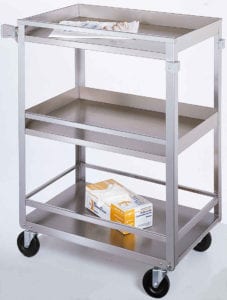
- Use mobile, hands free waste disposal systems inside the isolation area. Accessories like the Lakeside Trash Bag Kit attach onto case carts.
- Hospitals are also setting up carts for dedicated patient supplies within the patient’s reach. Water, tissue and other personal hygiene items should be easily accessible. It is critical that the cart can be thoroughly disinfected before use by other patients. Carts like the Lakeside Guard Rail Cart are a great solution.
Lakeside is closely monitoring hospital supply needs for the COVID-19 pandemic. Lakeside will continue to work hard to provide updates on equipment needs for hospitals and other healthcare facilities as the situation continues to evolve.
We are working hard to ensure our supply meets the increasing demand at this time. If your organization has any questions on carts for special facilities, please reach out to our sales team.
Lakeside Has You Covered
Check out our COVID-19 resources page and product solutions pages for helpful, informative, and up to date information relevant to the pandemic in real time.
